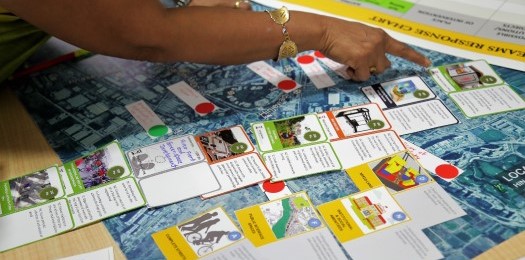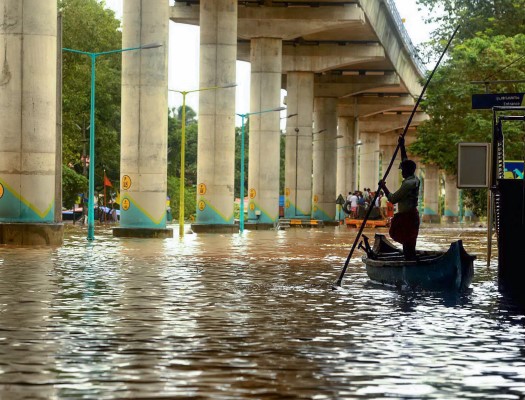Livable Neighborhoods
More than a third of India’s population lives in cities, and within our lifetime this figure is likely to reach three-quarters. Urban interventions that focus at the city scale sometimes fail to identify local differences, needs and expectations. Focusing on neighborhoods becomes easier to collate relevant data and identify and co-create appropriate solutions suited to specific communities’ needs and aspirations.
Interventions in strategic neighborhoods is also likely to have city-scale implications — improving well-being, resilience, sustainability and economic prosperity that go beyond the neighborhood itself. For example, improving access to hubs of employment can change the labor market geography for the entire city.


Neighorhood Improvement Program
A participatory planning game aimed at shaping people-centric livable neighborhoods, the Neighborhood Improvement Program (NIP) is an interactive card-based activity designed to include everyone who has a stake in a neighborhood. It allows the participants to identify challenges and envision and prioritize implementable solutions. A short-term engagement activity aimed at triggering long-term impact, the NIP is flexible and can be customized to suit specific participants (citizens, experts, decision makers) – improving local understanding, enabling the creation of a shared vision, and strengthening community participation and collective decision-making.
Nurturing Neighbourhoods Challenge
The Nurturing Neighbourhoods Challenge is hosted by the Smart Cities Mission, Ministry of Housing and Urban Affairs (MoHUA), Government of India, in collaboration with Van Leer Foundation and with the technical support of WRI India. This Challenge aims to incorporate a focus on neighbourhood-level improvements in parks and open spaces, streets and junctions and early childhood development centres that promote healthy early childhood development (0-5-year-old children) in the planning and management of Indian cities. By fostering partnerships with local communities, seeking convergence with existing programs, strengthening institutional capacity, and formulating conducive policies, ten cities have identified unique approaches towards scaling young children and caregiver friendly public spaces. A total of 100+ public spaces have been created so far across 10 cities under the Challenge benefitting over 1 million users.
View the Nurturing Neighbourhoods Challenge Compendium | Visit Website

Shaping Kochi's Climate Resilience RoadMap
The coastal city of Kochi is prone to multiple climate vulnerabilities. With fast growing urbanisation rates and changing land use patterns, it is critical to understand citie’ climate resilience needs for further planning and development. Kochi Municipal Corporation in partnership with WRI India, under the Cities4Forests program, is adopting a multi-pronged approach towards building climate resilience through policy interventions such as developing the Kochi city resilience roadmap and community led tree plantation interventions such Kawaki.
Our story map visualizes how Kochi's existing infrastructure and services are equipped to cater to the need of its citizens disaster preparedness and climate resilience needs. We focus on the morphology between different anthropological elements of city, from urban build-up, green cover, urban heat islands and flood plains to access to services like hospitals, rescue centres and open spaces, and map it toideal resilience standards and prescribed national requirements.

